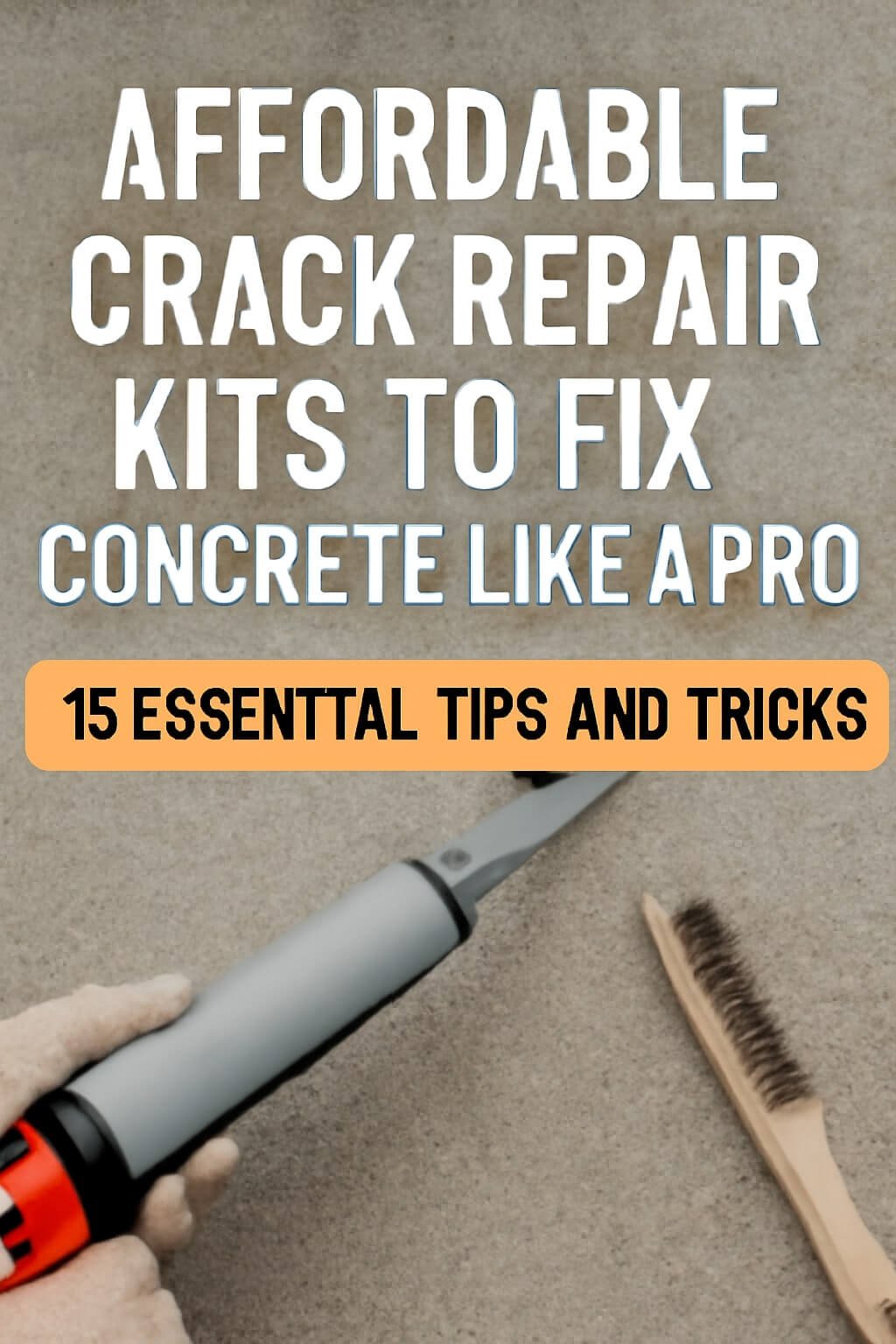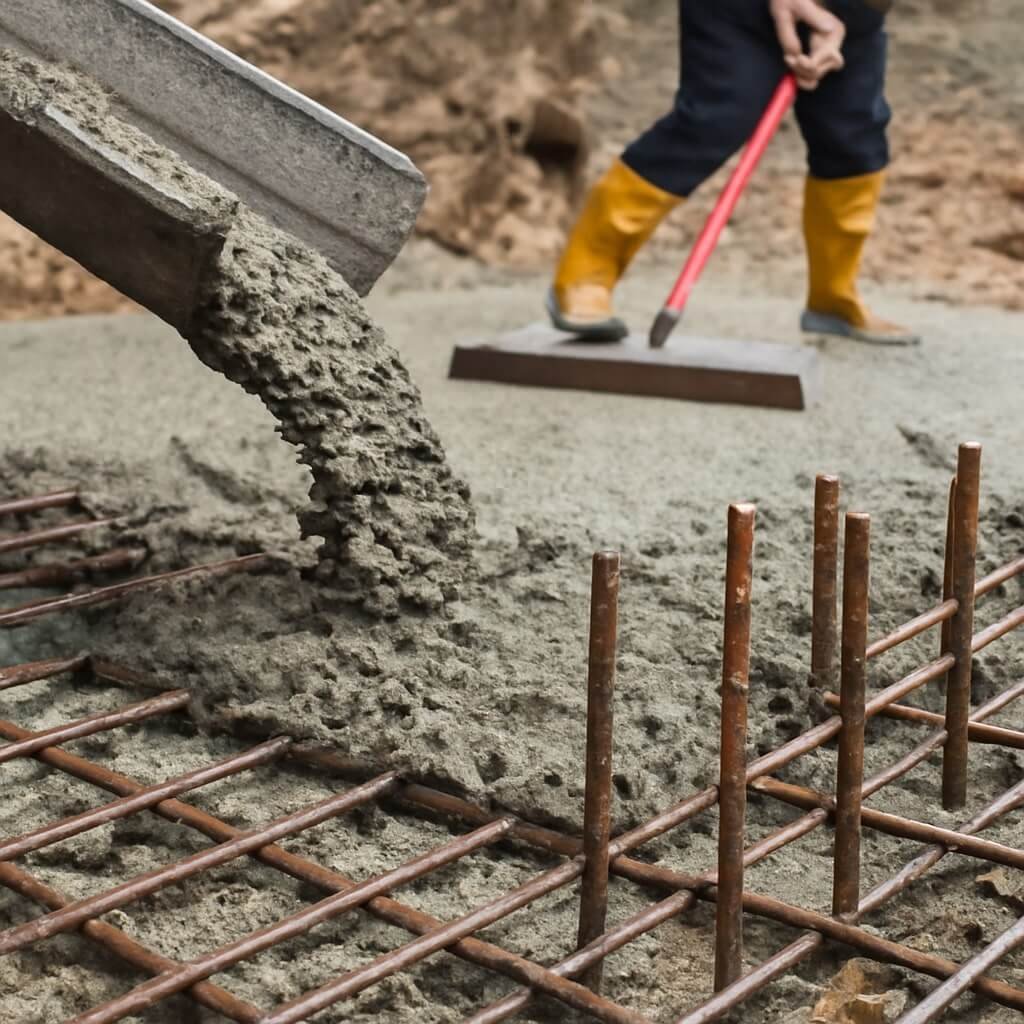Concrete is one of the most widely used construction materials globally due to its strength and versatility. However, it’s vulnerable to various environmental stresses like moisture, chemicals, and temperature fluctuations that can weaken it over time. Using the best sealants to boost concrete durability is crucial to extending the life and maintaining the integrity of concrete structures.
Concrete sealants act as a protective shield, enhancing durability, reducing maintenance costs, and improving the surface’s appearance. This article explores the top sealants available, how they work, and how to apply them correctly.
2. What Is Concrete Sealant?

Concrete sealants are protective coatings applied to concrete surfaces to prevent damage from water, chemicals, and abrasion. These sealants form a barrier that stops harmful elements from penetrating the porous concrete, which can cause cracking, spalling, and deterioration.
Types of Concrete Sealants
- Penetrating Sealants: Absorb into the concrete and protect from inside.
- Film-Forming Sealants: Create a visible protective layer on the surface.
- Acrylic Sealants: Provide a glossy finish and moderate protection.
- Epoxy and polyurethane sealants offer strong, durable protection, ideal for industrial use.
Each type has specific use cases, depending on the environment and performance requirements.
3. Why Use Sealants to Boost Concrete Durability?
Concrete, by nature, is porous and susceptible to damage from water infiltration, freeze-thaw cycles, chemical spills, and UV rays. Sealants prevent these factors from causing premature failure by:
- Reducing water absorption
- Resisting chemical damage
- Minimizing wear and abrasion
- Enhancing surface appearance and color retention
Proper sealing leads to increased lifespan, less repair work, and cost savings over time.
4. Factors Affecting Concrete Durability
Several elements impact how long concrete lasts, including:
- Weather Conditions: Freeze-thaw cycles cause cracks.
- Moisture Exposure: Leads to corrosion of steel reinforcements.
- Chemical Exposure: Acids, oils, and salts degrade the surface.
- Mechanical Stress: Heavy loads cause abrasion and wear.
Sealants help mitigate these factors by reinforcing concrete’s resistance.
5. Key Features to Look for in a Concrete Sealant
When selecting a sealant, consider these critical features:
- Penetration Depth: How well the sealant soaks into the concrete.
- Durability: Resistance to wear, UV rays, and chemicals.
- Breathability: Allows moisture vapor to escape, preventing trapped moisture.
- Application Ease: Suitable for your skill level and tools.
- Aesthetic Impact: Glossy, matte, or natural finish options.
6. Top 10 Best Sealants to Boost Concrete Durability

| Sealant Name | Type | Pros | Cons | Best For |
|---|---|---|---|---|
| Siloxa-Tek 8500 | Penetrating | Long-lasting, water-repellent | Higher cost | Driveways, patios |
| RadonSeal | Penetrating | Vapor-permeable, eco-friendly | Slightly longer curing time | Basement floors |
| Foundation Armor SX5000 | Film-forming | UV resistant, easy to apply | Less breathable | Exterior walls |
| Quikrete Concrete & Masonry High Gloss Sealer | Acrylic | Glossy finish, budget-friendly | Less durable outdoors | Indoor concrete surfaces |
| Ghostshield Lithi-Tek 9500 | Penetrating | Deep penetration, chemical resistant | Requires multiple coats | Industrial floors |
| Rust-Oleum EpoxyShield | Epoxy | Tough, chemical and abrasion resistant | Complex application process | Garages, warehouses |
| Valspar Concrete Sealer | Acrylic | Affordable, quick drying | Moderate durability | Patios, walkways |
| Foundation Armor AR350 | Acrylic | Breathable, UV resistant | Requires reapplication | Driveways, pool decks |
| Tuff Duck Concrete Floor Sealer | Polyurethane | Durable, water-based, non-yellowing | Longer curing time | Interior floors |
| Loxon Concrete & Masonry Primer/Sealer | Acrylic Primer | Excellent adhesion, breathable | Primer only, needs topcoat | Surface prep |
7. How to Apply Concrete Sealant Correctly
Applying sealant properly ensures maximum protection:
- Clean the Surface: Remove dirt, stains, and old sealers.
- Repair Cracks: Fill any cracks or holes.
- Dry the Concrete: Ensure the surface is completely dry.
- Apply Sealant: Use brush, roller, or sprayer evenly.
- Allow to Cure: Follow manufacturer’s instructions for drying time.
- Apply Additional Coats: If recommended for better protection.
8. Maintenance Tips for Sealed Concrete
- Clean with mild detergent regularly.
- Avoid harsh chemicals or power washing.
- Reapply sealant every 2-5 years depending on wear.
- Inspect for damage periodically.
9. Common Mistakes When Using Concrete Sealants
- Applying over wet or dirty surfaces.
- Skipping surface repairs before sealing.
- Using the wrong sealant type for the environment.
- Applying too thick or too thin coats.
- Ignoring manufacturer’s drying time.
10. Environmental Impact of Concrete Sealants
Many modern sealants are formulated to be eco-friendly, water-based, and low-VOC, reducing environmental harm. Penetrating sealants generally have less environmental impact than film-forming types, which may contain solvents.
11. Frequently Asked Questions (FAQs)
1. How often should I reseal my concrete surface?
2. Can sealants change the color of concrete?
3. Is sealing necessary for indoor concrete floors?
4. How long does a concrete sealant take to dry?
5. Can I apply sealant myself, or should I hire a professional?
6. Are there sealants safe for food preparation areas?
12. Conclusion
Choosing the best sealants to boost concrete durability protects your investment, reduces maintenance, and keeps surfaces looking great. Whether you need heavy-duty industrial protection or aesthetic enhancement for patios and driveways, understanding the types, features, and application process is key. Use this guide to select the perfect sealant for your concrete and enjoy long-lasting durability.



